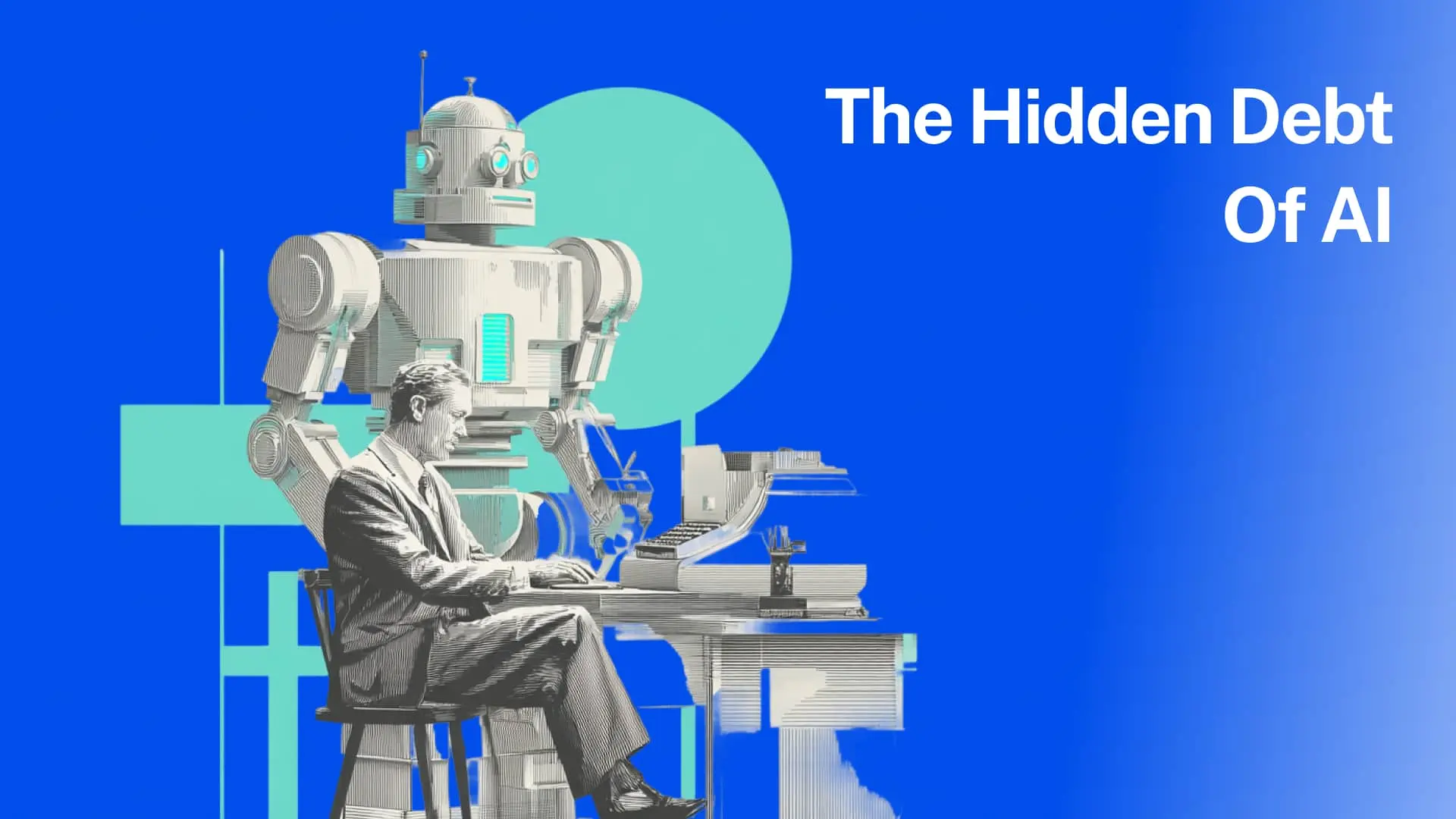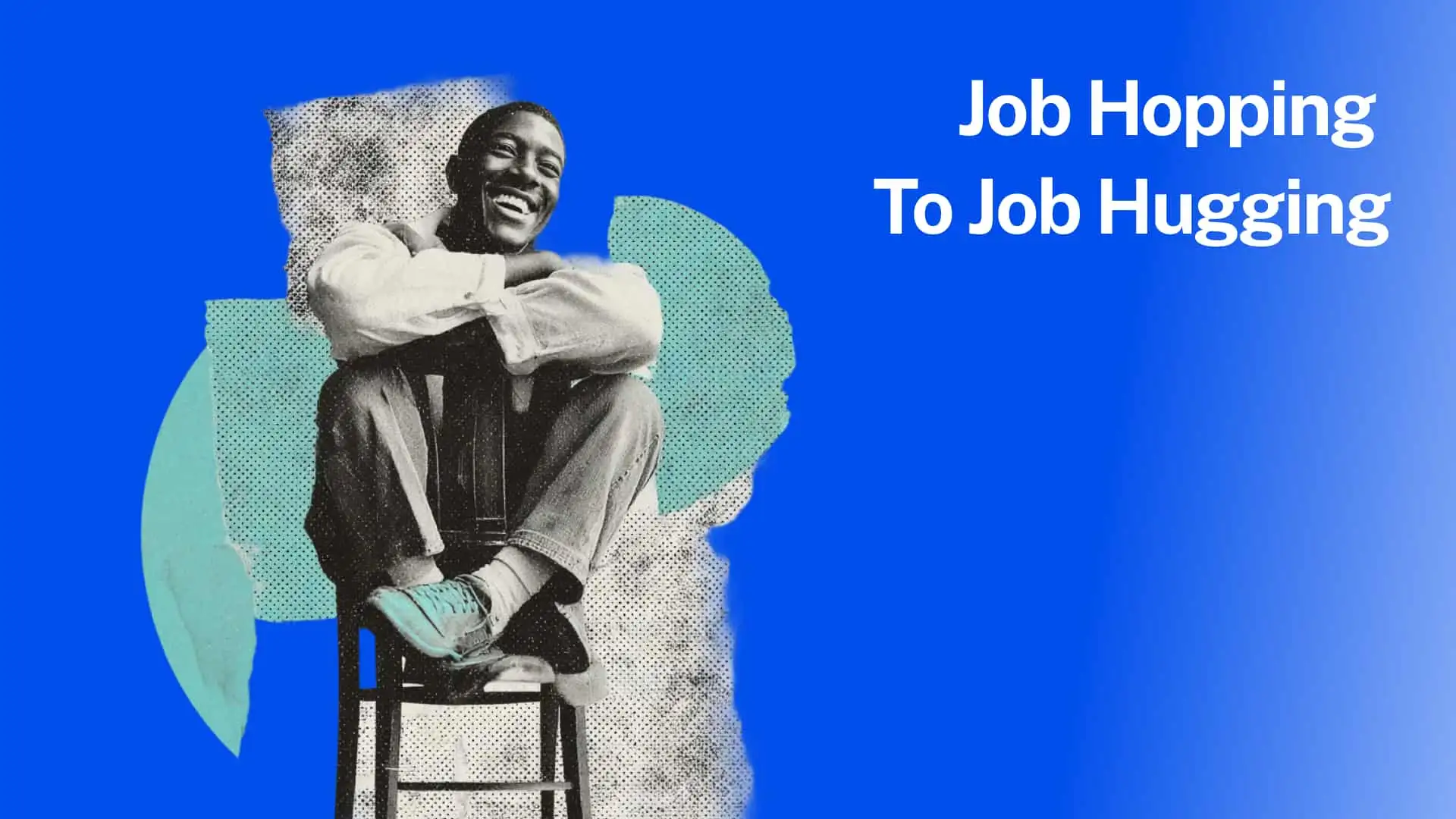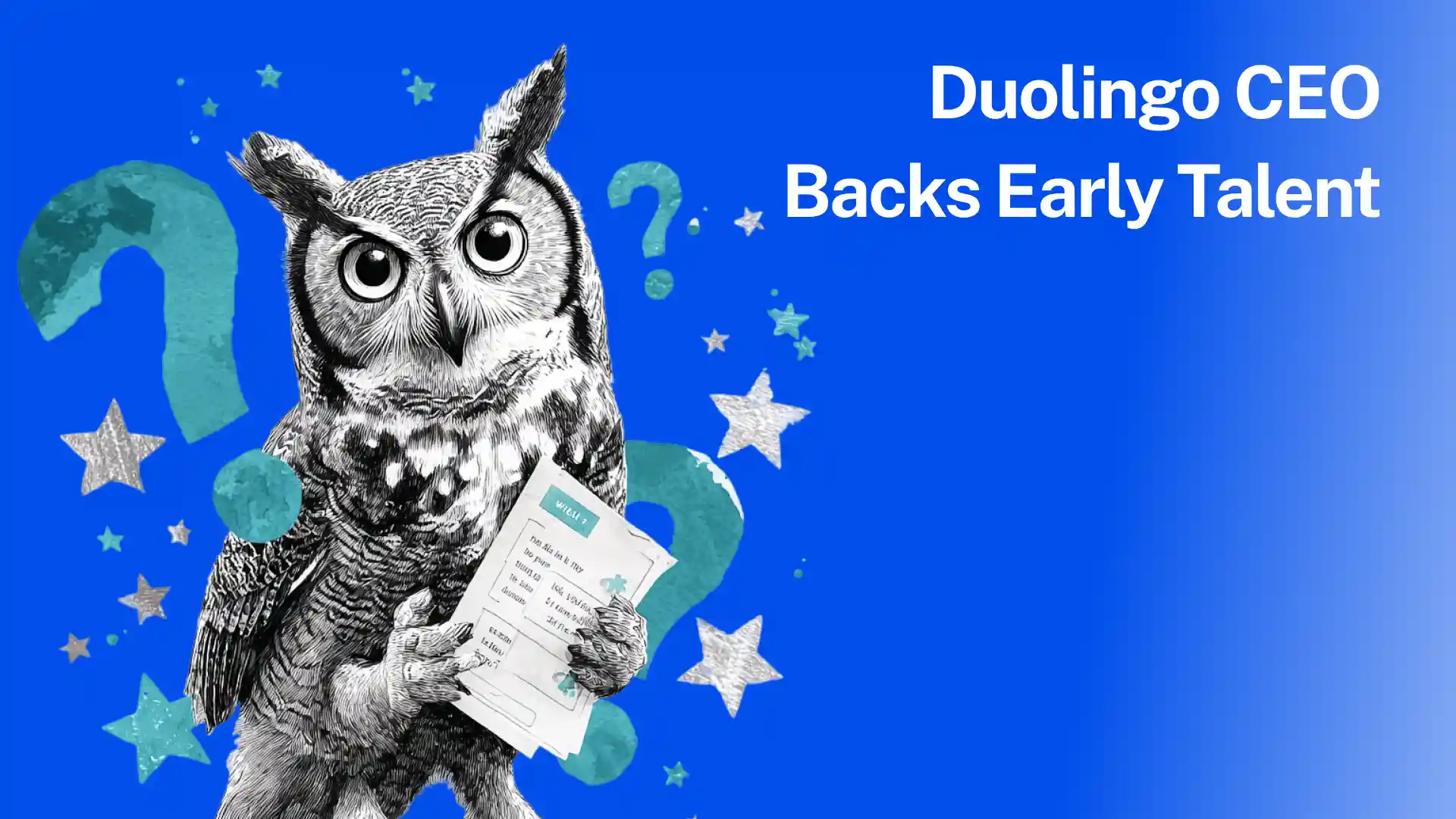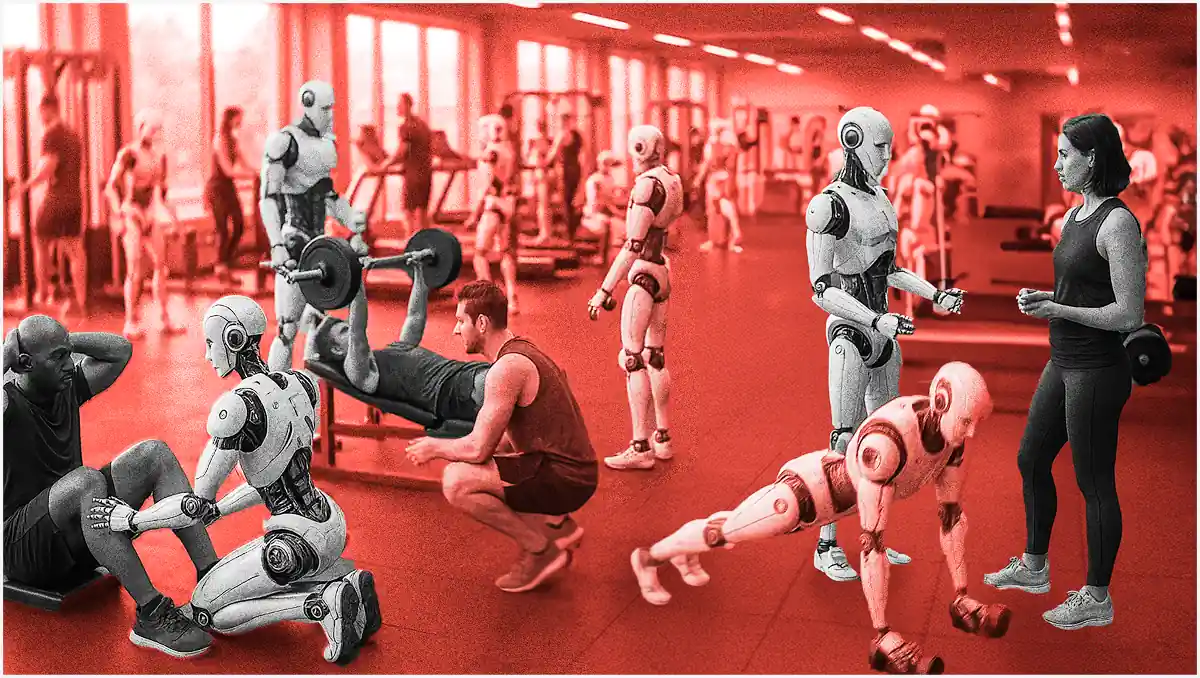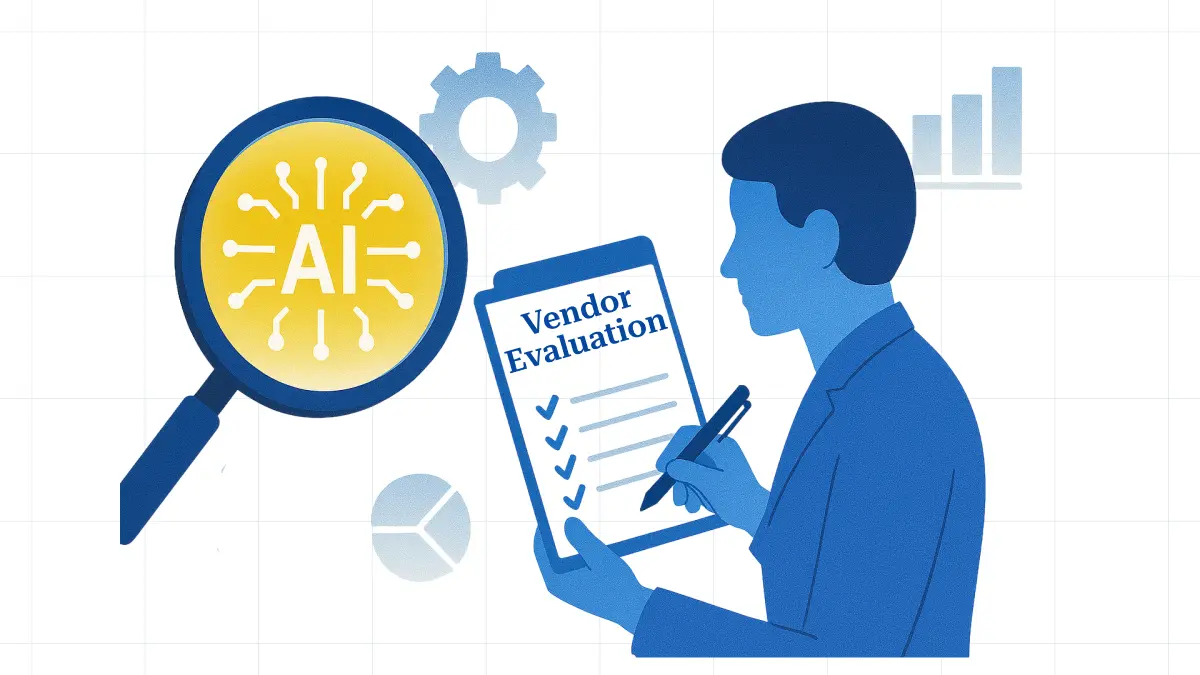🎧 Listen Now:
Welcome to today’s episode where we explore the fascinating intersection of AI and human resources with Barb Hyman, the founder of Sapia.ai.
As companies like Starbucks, Randstad and Holland & Barett begin to leverage AI for interviewing, Barb discusses how this decreases bias, increases diversity, and makes the recruiting job a lot more joyful.
Today’s discussion unveiled several critical insights into how AI is reshaping the hiring landscape and HR as a whole:
1. The role of AI in Recruiting
We learned that AI can dramatically enhance interviews by replicating a five-star recruiting journey at scale, starting with a structured interview. It also makes interviews less biased, more enjoyable for the candidate, and the start of a data-driven employee journey that leads to improved retention. Consider integrating AI tools where manual work doesn’t provide benefits and may induce bias.
2. Bias and Diversity
Giving more candidates a universal interview experience leads to more people being considered for a role, blind to demographics. Additionally, using chat vs. video or in-person interviews leads to more women applying, and letting candidates proactively provide demographic information.
3. Data-Driven Insights for Retention
Our discussion highlighted how AI could use performance data to predict long-term job success, thus improving retention rates, like Holland & Barrett saving money with 30% improved retention.
4. Ethical AI Use
Addressing AI skepticism through ethical practices was a significant point. Promote transparency in your AI implementations and engage in open dialogues about the ethical use of AI in your hiring practices to build trust and acceptance among stakeholders. Also keep in mind that where the data from candidates sits matters and increase your fluency in understanding the privacy elements of AI.
I also loved Barb’s point of view that AI ultimately gives people more agency, which is a very positive view on the future of work.
🔔 Available on:
Transcript:
Daan van Rossum: I want to dive in and ask you about Sapia. This is your platform. You founded it, I think, about six years ago. I am really curious about what it is, what it does, and what part of the current process it replaces.
As I've been mentioning to people that I have you on the podcast, a lot of people have asked me what makes Sapia so special in a pretty busy category. So I would love to hear a bit about the platform, basically.
Barb Hyman: Sapier.ai is a combination of two concepts, the homosapien and AI, and that is really the core of what we're trying to do: leverage clever technology, but in a very human way that works for humans.
What we are is really a category-maker. We have invented a capability, which is the ability to understand people deeply through language. So we were working with language data and natural language processing way before November 23, when GPT was first launched. What we're doing is bringing human-centered technology that is both fair and accurate to help DNA people for roles.
Now, the way you would traditionally do that is by using a resume, which we all know is seriously flawed when it comes to evaluating people. You might do it through people, and we are also seriously flawed because many of our biases are quite unconscious, or you might use a different kind of traditional assessment.
We don't think of ourselves as an assessment because we're an interview. That's the category that we've built, and who doesn't get hired without an interview? So that's the space that we've occupied that we're trying to deliver a solution for.
Daan van Rossum: In that sense, would you mostly just replace the old-school process of someone interviewing personally, and which kind of customers are most interested in this kind of solution? At this point in time, I saw you have some really amazing logos on your side already.
Barb Hyman: If you think about hiring, in an ideal world as a recruiter or as a company, you would bring to your hiring manager, who's really the ultimate decision-maker, three star candidates, and they'd want to hire every single one. That's what we do.
So we take care of it from the point at which people apply. Here's your short list of the best. That's what we do. So we are replacing recruiters in many of the organizations that we work with, or we're replacing recruiters in their traditional role of just doing screening and CV screening.
You can use us as a fully automated application to determine the qualification process. Then you always have a human, which is usually the hiring manager, who makes the final decision. But we're making sure that, up until that point, everyone's had a fair shot at the opportunity. Everyone's received this incredible experience because they all learned from it. And the whole process is efficient, fair, and actually very empowering for candidates. That's the difference between a chat, an interview, a video interview, or playing a game.
Daan van Rossum: Can you share a little bit about the technology that goes into something like this? It sounds incredibly complex. It may actually be one of those things where people say, “Oh, a machine could never do that. This always needs to be a human.” So, how does an AI do this?
Barb Hyman: It's really quite simple in its conception, which is the best way to interview people, and this is meta-analysis. Academics that are validating this are through a structured interview. A structured interview is where a human asks all candidates the same questions.
And measure them against a really clear rubric of what they're looking for. But the problem is that we humans don't scale. So we never interview everyone, and we certainly can't do that consistently and without bias.
So what we've built is the technology that does that for you. So it's built on the science of a structured interview, but the beauty is that there are only five questions. And those questions are allowing people to tell their story about who they are. And everyone learns from that experience. The feedback is a really key reason why so many consumer brands use us. That's the genesis of it. We didn't invent structured interviewing, but we've solved the problem of hiring using that science.
In terms of the AI that sits behind it, it took us two years to build a product because the key to this is that it is ethical. There are a number of elements between the data that we use and the data that we don't use. So we had to test the questions—what questions will elicit the right amount of data in the right context for us to properly evaluate you?
And what is the data that we're using to build these models? And so we use our own data, which we call proprietary de-identified data, that comes from the 3.7 million interviews that candidates have done in 47 countries. And all of the algorithms have been built based on that data. So we can evaluate personality traits, the big five plus humility, as well as a whole set of competencies, and really add any competency that you're interested in, as well as communication skills.
And if you think about one of our clients, the largest BPO in the world, Concentrix, and how important communication skills are, the right temperament is, and also competencies, the ability to do that in just five questions in one interview or assessment is particularly compelling to move towards the right candidate fast.
Daan van Rossum: If I understand it correctly, there's almost a gold-star way to interview someone, and that's a structured interview where you ask a couple of questions. Because you ask everyone the same questions, you can be much fairer in how you compare the candidates that you have in front of you.
Unfortunately, because humans don't scale, you wouldn't really be able to do it, and you basically see in practice that most people just skip that step or only save that for maybe a few standout candidates based on resumes, which, as you said, are not really that great of a source of information.
Then, basically, the platform does that automatically at scale, and then how does it practically work? So first of all, tell me if I got that right, and then second of all, how does that practically work? Does an AI call me and say, Hey, I heard you're interested in this job...
Barb Hyman: Let's say you're at work. So you would apply through Workday, and pretty quickly there would be a message that would say, Hey, Daan, we want everyone to be given a chance to work for our organization. Click here. It'll take you to a website browser. You don't need to download, and you'll start this experience.
But the beauty of chat dialogue is that a big part of what we're trying to solve is: What do I need to know in order to qualify myself for this role? So customers like Joe & the Juice have these awesome videos that showcase the role; they have people in the role speaking to the role. So it becomes a full discovery process for both the candidate and the organization.
So it ends up being a job preview experience as well as a job application and evaluation experience, and that's the difference between chat as a medium and any other kind of tool: it really allows both sides to engage and connect in a much more human way.
Daan van Rossum: That sounds really interesting. I'm really trying to build my mental image of how it works. But it sounds again like if you had only one candidate and you wanted to put a lot of effort into making that almost like the best recruiting process, then this is exactly what you would do.
You would share so much in depth about the role, and you would give them a sense of what it would be like. You would also give people the option to maybe self-select out if they felt like, actually, that's not me. I don't think I would be a good fit for the role.
Then you would ask them all these questions. You would get that information, and you would spend a lot of time on that kind of analysis. Now, basically, the platform does it for people.
Barb Hyman: You've completely nailed it. The way we always think about designing experiences, what would the best recruiter do? What would the ultimate human experience be? And we try to build it around that. There's also another element that we're now adding to it as well, which is that there's always an interview, and most interview scheduling processes are form filling via mobile, and we want it to be something that's much more human.
This is where we're including generative AI, where it has a conversation that effectively the recruiter facilitates between you, the candidate, and the hiring manager as to when is the best time, but it's much more human in the way that. As part of what we do in the chat, we always encourage our customers to add a section where people self-report their demographics.
We do that for bias testing in the US, but it's also a big part of our platform; it is about the ability to increase diversity at the top of the funnel and maintain that, through the funnel, customers value all the reporting they get, which allows them to see where they are getting their fair share of diverse talent, etc.
If you identified or self-identified that you're in a wheelchair, let's say you're someone with a disability, the interview advice to the higher manager will say, Don't forget Barb's in a wheelchair. So you need to meet her on the ground. Now, most candidates feel like they share this data, and it goes nowhere. So we're really trying to, again, that's what a human would do. They would remember that. They would note that. They would share that with you.
The other piece that's really quite differentiated in the market is that most AI is not AI. It is simple automation. We are a learning technology, and how we learn is tracked through our integrations with HRISs who leave. And so we're able to identify that there is a unique profile attached to those who are good, i.e., they stay in the role for 9 months or 12 months versus those who leave early.
And Netflix and Amazon learn from your behavior. Our technology learns from performance in roles, and often time in roles is a great proxy for performance. So we don't just deliver a really beautiful, efficient process for hiring; we actually also deliver business outcomes like reduced turnover.
I think that's pretty unique. I don't think there are many AI tools that are really learning from data as we retrain models. There's always a human in the loop at that step, of course. It's not an automated process like Netflix, but that's where, when you ask, who do we go after? We typically see our product as particularly valued by retail F&B contact centers. Anywhere where there's high turnover, because they're looking to solve that as well as an efficient recruiting process.
Daan van Rossum: Interesting. I could have imagined that the tool or platform would definitely help in understanding which people who apply actually convert to being higher. But the fact that you're tracking it through all the way to retention and then going backwards and optimizing for that. That's extremely powerful.
Barb Hyman: Yeah. Holland & Barrett, which is a well-known retailer here, has seen turnover reduced by 30% in the first 12 months, which for them is actually a cash cost savings because they invest in, I think, A-level training for their sales staff to learn how to provide advice around vitamins, etc.
That's the kind of utopia for many high volumes. You don't want a faster status quo, as I call it. You don't want to just keep filling the seat with people who will leave. You really want to optimize for quality, and so that's an aspect of our technology that we're quite proud of.
Daan van Rossum: Absolutely. It seems like this is really where the added value of the AI really makes sense, because it's almost impossible for a human to do that. For sure, if I had someone who left, I would not go back to the cues I got during the interview. And I would definitely not do that at scale if I'm a Holland & Barrett. So that sounds extremely valuable.
Barb Hyman: Yeah. I think recruiters often feel very intimidated by this because they worry about job security, but at the end of the day, resolving for what they've always craved, tell me who's been great, and help me do my job better so I can hire the right people.
And so by seeing this data as something that helps them do a better job and spend a lot less time with many candidates, they're spending more time with fewer candidates, but most importantly, they're spending time in the business. Because I think the key thing that doesn't yet look like it's working is recruitment, what am I looking for?
What's really important for this role? And if they could be more of a talent advisor, rather than screening a thousand candidates based on their views of what great looks like, I think the organization will be better off and they'll have a better job.
Daan van Rossum: To me, this is the whole promise of AI. You take the repetitive, boring, and menial part of your job. You automate that away. You leave that to the AI, and then you can focus on the stuff that's interesting and that matters, which hopefully for recruiters is speaking to people, getting to know people, and maybe spending a little bit more time with those candidates.
We know from the PWC research that for most CEOs, recruiting is actually the number three biggest time waster in companies. They see it as extremely inefficient. I think right behind email and meetings, and I think procurements. So you have all these amazing customers already.
As you're now going out and trying to sell it to new customers, what's the level of readiness for this kind of solution, and is there any difference in whether you're talking to a recruiter or maybe a CHRO? Are there any differences geographically?
What is it like to be selling this solution? Because it is very complex in a way, you can explain it simply, but in a way, it's complex as well. What is it like to sell it into the market right now?
Barb Hyman: We're a data company. And so we really go after organizations where they're hiring at scale. And we have found that retail is the most compelling prospect segment to sell into because there's no retail business that isn't using AI in their core business.
We use AI to decide on pricing or shelving positioning and then use it around people; it's not such a big step. So the market we see as an obvious target market for us.
The other big segment that we go after is where we see a natural fit: we are really unique in experience. So as much as you say we're automating and creating efficiency for the organization, I'm equally passionate about how you create a dignified experience for the candidate. And consumer brands, where they spend a lot of money getting people into stores, care about that last meter of experience, and care about the experience candidates have because they know their candidates are their consumers, naturally embrace this.
So that's a much easier sell. I'd say that there are segments that we don't find easy to sell into and that we don't spend a lot of time on. I think healthcare is very difficult. I think healthcare has a lot of other problems. And it's very hard to get them to shift. I don't see them as a segment that has fast followers in terms of innovation, but consumer brands like Joe & the Juice want to be the first global F&B brand that puts people at the core of their culture, like a perfect fit.
We talk about Sapia as the tool that brings you people who belong to your brand. So if you are _____, you care about people, you care about people's experiences, you care about fairness, and you care about diversity. That's where we see a natural fit.
Daan van Rossum: That's amazing. We've discussed quite often on the podcast the link between CX and EX.
I like this kind of additional layer because there's also a word-of-mouth component to it. If I have a fast food chain or a Joe & the Juice and I'm interviewing a lot of people, maybe their experience was shared with 5 or 10 people. That's all your consumers, besides the people themselves. That sounds like making an impact is really powerful.
Can you maybe share a bit more of the candidate experience side of it? Because that was also the part that really excited me when I learned about this. This must be a much better experience for people applying for jobs.
I think a couple of typical issues in the recruiting process are the black box syndrome, where I apply for a job and I never hear back, or I hear back really late, maybe not having any transparency in where I stand in the process. Are you getting any data back or any insights back from the candidate side in terms of whether they like it better, maybe through an MPS or something else?
Barb Hyman: We track data, obviously, being a data company. We ask candidates once they complete the chat to score it and leave verbatim; something like 80% of candidates leave verbatim, which is amazing. And then we analyze the sentiment, and that sentiment is 99% positive.
What do they like? It just feels comfortable, easy, and unstressed. We have a 91% completion rate. We track that across all different groups—male, female, non-binary, ethnic groups, age, and people who identify with a disability—and it's universally loved and trusted. I think for people who are neurodiverse, in particular, we see incredible engagement and response because it's not timed.
And it's blind.
The fact that it's blind—this is what you and I are doing—is what makes a difference for a lot of people. And next week, we're releasing some research where we analyzed across half a million candidates globally what the abandonment rate was for video interviews versus chat interviews, and it was two and a half times greater for women from an abandonment rate perspective.
So there is a lot of talent diversity you're going to miss out on if you don't choose something that people really trust and feel confident with.
Daan van Rossum: Just because of the format, so the fact that I have to go and talk to a live person or even video versus chat, those things really matter on a pretty big scale.
Barb Hyman: They've lost you. And so you can't afford to do that in a world where you've got unemployment at 3.7%. You need to appeal to the universe of talent. But I believe that people want to be heard. They want to be understood. They have a story to tell. And it's interesting how some clients initially almost dumbed down candidates, particularly for retail roles.
They felt that they couldn't be bothered to complete this chat and that they'd rather just, I don't know, engage with a pretty simple, dumb chatbot, but we don't see that. People want to share their story.
Tell us, Daan, what's the thing that's really brought you incredible happiness in your life? Or what's the best example that you can share of a team that you were part of? What did you love about that? It's your story. It's who you are.
But because it's not a simple chatbot, because it's science, we understand it, and we give you feedback. So everyone receives their own personalized profile called “my insights,” which is for your eyes only, and it gives you six insights and a coaching tip.
We didn't realize it, but we effectively built a coaching tool almost by accident, and people freaking love this. They can't believe how accurate it is. They feel more motivated. They feel more self-aware that customers are using that artifact in onboarding and in development.
People share it on Facebook. They share it on LinkedIn because most people are used to being, as you said, ghosted. And then the next thing that we're doing, apart from getting that to every single person who's interviewed when you are rejected because obviously no customer can hire everyone, is that we also give you additional coaching at that point. So, Daan, we are not going to hire you, but we want you to keep learning so we have all these insights about each individual that we're giving you back to help you and that you're not paying for. So you're getting free coaching using Sapia. So customers love that feature as well.
Daan van Rossum: Which, in a way, just goes back to the idea of what the best recruiter in the world would do. Or even a really good hiring manager would take the time to do that debrief and say, Here's why we didn't pick you. But I want to give you a little bit of feedback if you're open to it for maybe the next job application that you do.
Again, I know you can do it because you can do this at scale, and so the candidate's response is good to that too.
Barb Hyman: So we track: how likely is this to make you recommend the company to buy their products and services? The percentage of people who are rejected will go on Glassdoor and leave positive feedback, and we're talking in the eighties in terms of employee brand advocacy.
It has a huge impact on the employer's brand. A lot of our customers actually come from referrals from candidates. So Joe and the Juice is a great story. A candidate applied for a job at another customer, Walt, and loved it so much she told her brother, who happened to be really senior at Joe & the Juice, and the next thing you know, we're in a conversation.
So there is this innate virality that comes from candidates doing it because they're just so delighted to be heard and noticed and to learn from the experience.
Daan van Rossum: That's a fantastic growth engine. It sounds amazing. Are there any downsides to this platform?
Barb Hyman: Well, look, the hard thing is that there's a lot of fear around AI.
I actually think that regulation is a really great thing because it creates certainty and puts some boundaries around how you make the right decision. But unfortunately, there is a sort of knee-jerk reaction to AI equals bias, which people don't fully understand in HR. How do you do this responsibly?
How do you do it ethically, and what questions should you ask? So, I feel like we're still very early in the AI maturity curve, globally. I think it's more evolved in the UK, to be honest, and the EU. I think that's a function of standing regulation here around GDPR, which, whilst it's not AI-specific, talks to the same concept, which is respecting people's rights.
The EU AI regulation is just another case of embedding principles that respect people's rights, transparency, explainability, etc. But in the US, that's a market where, I think, because it's so litigious, there's a lot more fear around even thinking about it, let alone applying it consistently.
Daan van Rossum: For sure. There are some regulations being passed. So I think in California now, if you haven't been audited for the last year, then people cannot use your tool. But that's again, like, really specific to one state.
How do you see that developing in the U.S., because obviously it's still a big market for companies?
Barb Hyman: All regulation really comes back to the same principles that were really a foundation for us. That we released a paper called FAIR, what does it look like FAIR AI and recruitment and it's around validity. The lack of bias, transparency, and explainability is part of what makes us so strong on those dimensions; we don't use any human data.
We don't use any third-party data. We only use first-party data. So that makes it, at a starting point, very clean. The fact that we are also showing you the interview results so that you can see the data that's being used—that's what the user gets to see. And so you can easily review it as a human and compare it to what the AI does. That makes a very big difference.
The New York City law really revolves around transparency. Ironically, we built in real-time bias tracking based on the four fifths when we first started our dashboarding. And so we're effectively paying an independent auditor to do that for the client, which we do automatically for free, but that's the reality of having independent audits.
That doesn't require any change on our part. I think it's just holding people's hands through it. I'm an ex-lawyer, so I'm pretty familiar with this stuff and take a keen interest in it. But you're really just going through a procurement conversation, and I find a lot more interest in privacy.
It's probably the area that takes up the biggest amount of time for customers: just feeling really confident about what you do with the data and what you don't.
Daan van Rossum: I'm sure that's going to be one of the big discussions as AI evolves further and as a lot of companies adopt AI more broadly, which is, where does that data go because we see tools all the time?
One of the questions we really have to ask is: just about our internal data, what server is that going on to? What is going to happen with that data? Is that vendor ever going to have a data breach? Obviously, the moment you're talking about candidates, information is going to be even more sensitive, and I think brands are also very mindful of the fact that that's not a PR headline that you want, like your interview data or...
Barb Hyman: To treat your customer's data and their candidate's data because they own them like crown jewels. It's got to be embedded in your culture.
We invested in data sovereignty a long time ago. It's interesting to me how few HR leaders ask that question: Where is the data stored? Obviously, if you're working with an enterprise, it has to be stored in the country. Then, they're still using tools that have data moving around the place that's stored elsewhere.
I think the fluency is increasing, but we've always put our core trust at risk. If you're trusting us, we take that very seriously. And so we need to be transparent about everything, including the candidates and what's going on. We've really invented new science with what we've built, and we write it up, and it gets peer-reviewed in published research.
So, we've effectively given away our IP. We think that increases trust between us and the customer.
Daan van Rossum: Definitely. You're continuing to build on that. So probably your competitive angle will be that you just out-innovate everyone, and therefore you can share your current practices.
What's coming up in the future? You recently launched Sage, which is really more focused on the sort of life cycle that continues after recruiting. What's coming up?
Barb Hyman: Sage is pretty incredible. We were at NVIDIA. I wasn't, but our R&D team was, and they actually had a photo op with Jensen from NVIDIA, which is pretty cool.
But we were one of 44 startups invited to present there. And what we launched was the ability to now assess for any competency. So think about white collar, where you really want to dig deep into things like growth mindset and agility. We have the model of reinforcement learning through a human first.
We have a subject matter expert, typically an organizational psychologist, who will teach the machine what growth mindset means at a very detailed level at what we call a facet. Then we have fine-tuned LLaMa2. We chose that open-source model, and we fine-tuned it with our data. So we're now able to evaluate, score, explain, and give insights.
Think again about what the best recruiter would do. They would say I've interviewed Barb very deeply on all of these dimensions. Here's how she scores on each dimension. Here's why, and here's what it means for you in terms of whether you should put her in that position or not.
It's like a goal: what recruiter gets the capability or has the capability to do that across all roles? And so we see this as very disruptive to the recruitment market, because if you think about it, a lot of hiring is outsourced to recruitment firms, which is disruptive to players like Korn Ferry, where people are seeking competencies deeply, but in a very kind of old-school experience, but it's the coaching for it.
I've always believed that no one wants to see an assessment without knowing what the “so what” is. So being able to give live coaching about this is where Barb will really thrive. This is where she might struggle, and this is what you can do to support her. That's what makes it human. You're meeting the hiring manager where they are. You're really helping them and guiding them to make the right decision.
Daan van Rossum: Because you're picking up a lot in that kind of interview recruitment process, you can also apply as someone goes into that role. And then, based on our data and where we've seen the best people do really well, how can we coach them further? And that's the development part, then. So, do you see the platform building out to that end?
Barb Hyman: That's right. And we'd love to also be able to offer this capability in a white-label way. We see ourselves as continuing to build the business from a direct customer point of view, but to be able to embed this capability in job boards and CRM where you're wanting to understand talent and know what the circumstances are that are going to set this person up for success? It's the ultimate business partnership capability that we've built. So we're very excited about that.
I think we're pretty advanced relative to others. We also built our first large language model last year using proprietary data to detect cheating. So if you're completing an interview and you're going to GPT, we can say that live, “Hey, it looks like you may have sourced your answer from artificially generated content. Do you still want to submit or do you want to edit?” And that's pretty game-changing too, from a behavior perspective.
Daan van Rossum: Which again is fine because probably once you start doing the job, you'll use ChatGPT too, but it's nice to get at least that feedback so that you don't submit the same answer that everyone else does. That sounds pretty good.
It sounds really fascinating to me. We are definitely eager to learn more, but we are at the end of the time. I want to close out with maybe one wish that you have for the future of work.
Barb Hyman: Look, I think where technology is going is it's about AI that gives people agency, so the sphere of AI that weaponizes your data or AI that is used by someone else to your detriment, I think what's so exciting about conversational AI is it's giving you agency and it's helping you shape your career and you own your decisions. And I think that power in the hands of the individual is incredibly motivating, and it's really what's going to drive towards the ultimate goal in hiring, which is retention.
Daan van Rossum: That sounds amazing. Barb, thanks so much for being on today.
Barb Hyman: My pleasure.










